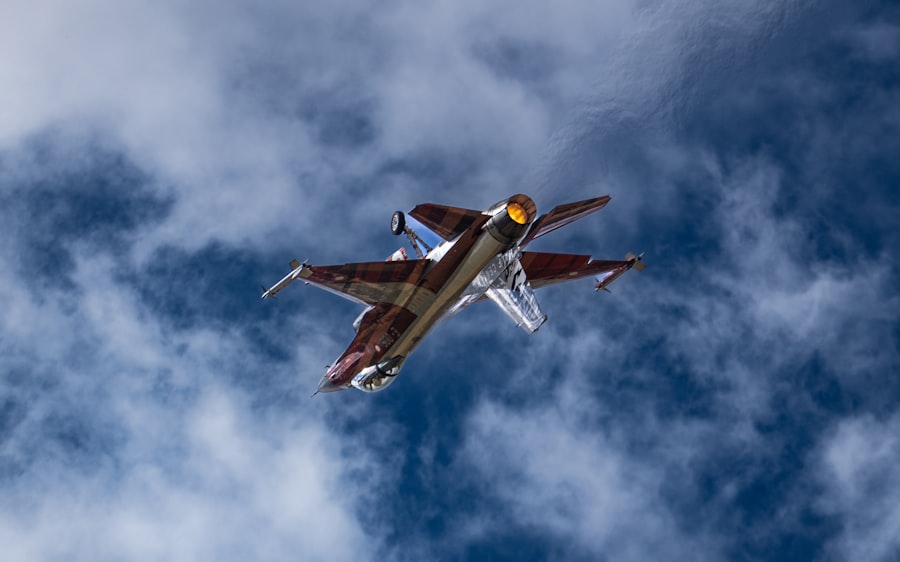The aerospace industry is undergoing a transformative phase, characterized by rapid technological advancements and shifting market dynamics. As global demand for air travel continues to rise, driven by an expanding middle class and increasing globalization, the sector is witnessing a surge in innovation. Emerging trends are reshaping the landscape, with new players entering the market and established companies adapting to remain competitive.
This evolution is not merely a response to consumer demand; it is also influenced by regulatory changes, environmental considerations, and the need for enhanced operational efficiency. In this context, several key trends are emerging that will define the future of aerospace. These include advancements in space tourism, the growth of commercial satellite launches, the development of electric and hybrid aircraft, and the increased demand for unmanned aerial vehicles (UAVs).
Additionally, the integration of cutting-edge technologies such as 3D printing and artificial intelligence is revolutionizing manufacturing processes and operational capabilities. As the industry grapples with environmental sustainability challenges, these trends are not only shaping the future of aerospace but also redefining its role in a rapidly changing world.
Key Takeaways
- Emerging aerospace market trends are shaping the future of the industry, with advancements in space tourism, commercial satellite launches, electric and hybrid aircraft, and increased demand for unmanned aerial vehicles (UAVs).
- Space tourism is rapidly advancing, with companies like SpaceX and Blue Origin making significant strides in making space travel accessible to civilians.
- The growth of commercial satellite launches is driven by the increasing demand for satellite-based services such as communication, navigation, and earth observation.
- The development of electric and hybrid aircraft is revolutionizing the aerospace industry, with a focus on reducing emissions and increasing fuel efficiency.
- The increased demand for unmanned aerial vehicles (UAVs) is driven by their diverse applications in industries such as agriculture, construction, and surveillance.
Advancements in Space Tourism
Space tourism has transitioned from a concept often relegated to science fiction to a burgeoning industry with tangible offerings. Companies like SpaceX, Blue Origin, and Virgin Galactic are at the forefront of this revolution, each with unique approaches to making space accessible to private citizens. SpaceX’s Crew Dragon spacecraft has already completed successful missions transporting astronauts to the International Space Station (ISS), while Blue Origin’s New Shepard has conducted suborbital flights that allow passengers to experience weightlessness and see Earth from a new perspective.
Virgin Galactic’s SpaceShipTwo aims to provide a more commercial experience, offering short flights that promise breathtaking views of our planet. The implications of these advancements extend beyond mere leisure travel. The burgeoning space tourism sector is expected to stimulate significant economic activity, creating jobs in various fields such as engineering, hospitality, and tourism.
Furthermore, as more individuals experience space travel, public interest in space exploration may increase, potentially leading to greater investment in scientific research and technology development. The democratization of space travel could also inspire a new generation of scientists and engineers, fostering innovation that benefits not only the aerospace industry but society as a whole.
Growth of Commercial Satellite Launches

The commercial satellite launch market has experienced exponential growth in recent years, driven by advancements in technology and an increasing demand for satellite services. The proliferation of small satellites, often referred to as CubeSats or nanosatellites, has opened new avenues for businesses and governments alike. These smaller satellites are more cost-effective to build and launch, enabling a wider range of organizations to participate in space activities.
Companies like Rocket Lab and Arianespace have capitalized on this trend by offering dedicated launch services tailored to the needs of smaller payloads. Moreover, the rise of mega-constellations—large networks of satellites designed for global internet coverage—has further fueled demand for commercial launches. SpaceX’s Starlink project is perhaps the most notable example, aiming to deploy thousands of satellites to provide high-speed internet access worldwide.
This ambitious initiative not only highlights the potential for commercial satellite launches but also underscores the strategic importance of satellite technology in addressing global connectivity challenges. As competition intensifies among launch providers, innovations such as reusable rocket technology are becoming increasingly vital for reducing costs and improving launch frequency.
Development of Electric and Hybrid Aircraft
| Metrics | 2015 | 2020 | 2025 |
|---|---|---|---|
| Number of electric aircraft in development | 10 | 30 | 100 |
| Range of electric aircraft (in miles) | 100 | 250 | 500 |
| Reduction in carbon emissions (in %) | 20 | 50 | 80 |
| Market share of hybrid aircraft | 5% | 15% | 30% |
The aerospace industry is increasingly focusing on sustainability, with electric and hybrid aircraft emerging as promising solutions to reduce carbon emissions and reliance on fossil fuels. Companies like Airbus and Boeing are investing heavily in research and development to create aircraft that utilize electric propulsion systems or hybrid technologies that combine traditional jet engines with electric motors. These innovations aim to enhance fuel efficiency while minimizing environmental impact.
One notable example is Airbus’s E-Fan X project, which seeks to develop a hybrid-electric aircraft capable of flying regional routes with significantly lower emissions than conventional aircraft. The project involves retrofitting an existing regional jet with an electric propulsion system, allowing for real-world testing of hybrid technology in aviation. Similarly, companies like magniX are developing electric propulsion systems specifically designed for aviation applications, with successful test flights demonstrating the feasibility of electric aircraft for short-haul flights.
As regulatory frameworks evolve to accommodate these new technologies, the potential for electric and hybrid aircraft to reshape regional air travel becomes increasingly tangible.
Increased Demand for Unmanned Aerial Vehicles (UAVs)
Unmanned Aerial Vehicles (UAVs), commonly known as drones, have seen a remarkable surge in demand across various sectors, including agriculture, logistics, surveillance, and entertainment. The versatility of UAVs allows them to perform tasks ranging from crop monitoring and precision agriculture to package delivery and aerial photography. As technology advances, drones are becoming more sophisticated, equipped with features such as advanced sensors, artificial intelligence capabilities, and enhanced flight autonomy.
In agriculture, UAVs are revolutionizing traditional farming practices by providing farmers with real-time data on crop health and soil conditions. This data-driven approach enables more efficient resource management and can lead to increased yields while minimizing environmental impact. In logistics, companies like Amazon are exploring drone delivery systems that promise faster shipping times and reduced traffic congestion.
Regulatory bodies are beginning to adapt their frameworks to accommodate these innovations, paving the way for broader commercial applications of UAV technology.
Impact of 3D Printing on Aerospace Manufacturing

3D printing technology is transforming aerospace manufacturing by enabling rapid prototyping and production of complex components with reduced waste and lead times. This additive manufacturing process allows engineers to create intricate designs that would be challenging or impossible to achieve using traditional manufacturing methods. Companies like Boeing and GE Aviation have already begun integrating 3D printing into their production processes, producing parts such as fuel nozzles and structural components that meet stringent aerospace standards.
The benefits of 3D printing extend beyond efficiency; they also offer significant cost savings. By reducing material waste and streamlining production processes, manufacturers can lower their overall expenses while maintaining high-quality standards. Additionally, 3D printing facilitates customization, allowing manufacturers to produce parts tailored to specific requirements without incurring substantial costs associated with traditional tooling methods.
As the technology continues to mature, its integration into aerospace manufacturing is expected to expand further, driving innovation and enhancing competitiveness within the industry.
Integration of Artificial Intelligence in Aerospace Technology
Artificial Intelligence (AI) is becoming increasingly integral to aerospace technology, enhancing various aspects of design, manufacturing, operations, and maintenance. AI algorithms can analyze vast amounts of data generated during flight operations or manufacturing processes, providing insights that lead to improved decision-making and operational efficiency. For instance, predictive maintenance powered by AI can help airlines anticipate equipment failures before they occur, reducing downtime and maintenance costs.
Moreover, AI is playing a crucial role in autonomous flight systems. Companies like Boeing and Airbus are investing in AI-driven technologies that enable aircraft to operate autonomously or assist pilots in complex scenarios. These advancements not only enhance safety but also improve fuel efficiency by optimizing flight paths based on real-time data analysis.
As AI continues to evolve, its applications within aerospace are expected to expand further, driving innovation across multiple domains.
Environmental Sustainability in Aerospace Industry
Environmental sustainability has emerged as a critical focus within the aerospace industry as stakeholders recognize the need to address climate change and reduce carbon emissions. The aviation sector is responsible for a significant portion of global greenhouse gas emissions; thus, efforts are underway to develop more sustainable practices across all facets of the industry. This includes investing in alternative fuels such as sustainable aviation fuel (SAF), which can significantly reduce lifecycle emissions compared to traditional jet fuel.
In addition to alternative fuels, aerospace companies are exploring various strategies to enhance energy efficiency throughout their operations. This includes optimizing flight routes using advanced analytics and improving aircraft design for better aerodynamics. Regulatory bodies are also playing a pivotal role by establishing emissions reduction targets and incentivizing research into sustainable technologies.
As public awareness regarding environmental issues grows, consumer preferences are shifting toward more sustainable travel options, prompting airlines and manufacturers alike to prioritize sustainability initiatives in their business strategies. The convergence of these trends signifies a pivotal moment for the aerospace industry as it navigates challenges while embracing opportunities for growth and innovation. The future landscape will be shaped by advancements in technology that prioritize sustainability while meeting the demands of an increasingly interconnected world.


